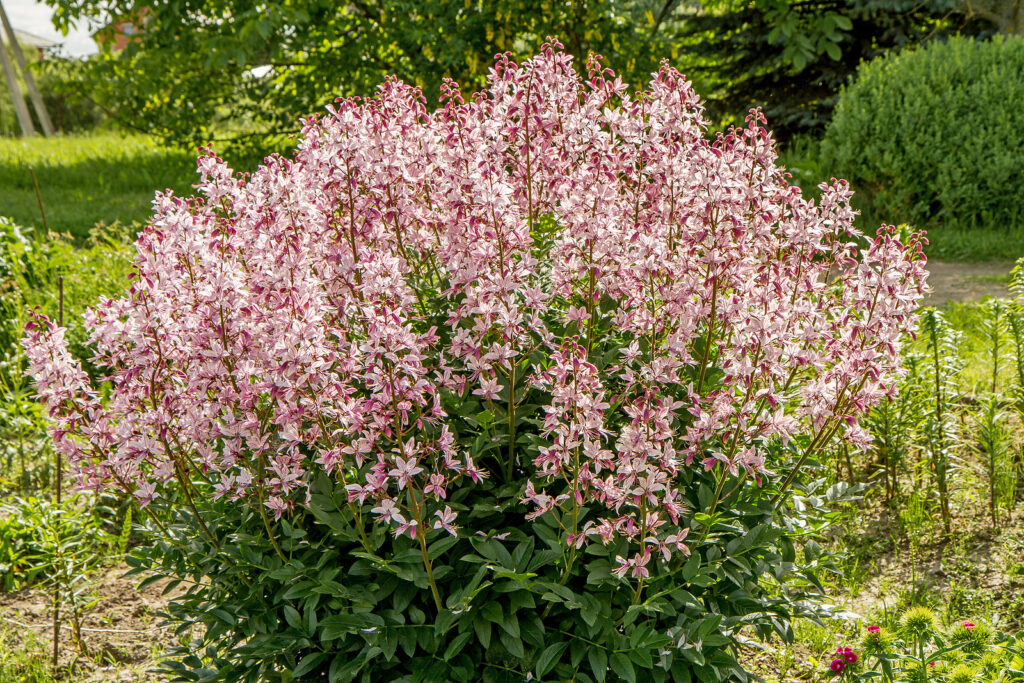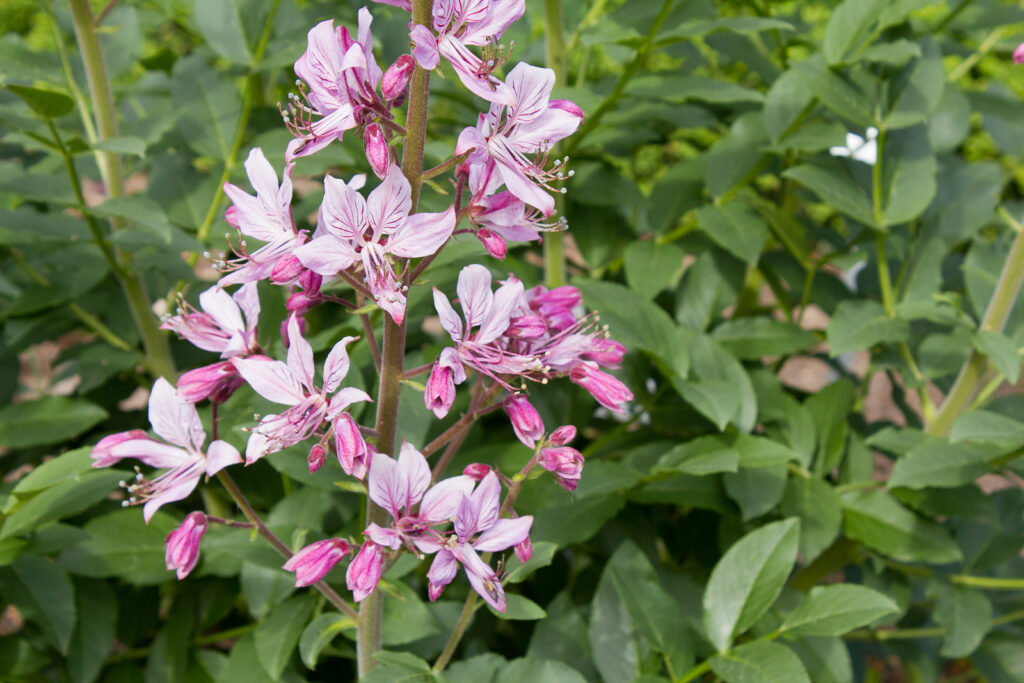Dictamnus is a long-lived perennial with impressive spikes of star-shaped flowers in early summer. White flowers are often streaked and spotted with purple. Star-shaped seed capsules follow the flowers and are often used by flower arrangers.
Dictamnus emits a strong lemony smell when brushed or rubbed. Oil in the leaves can cause an allergic skin reaction in some people.
The common name ‘gas plant’ arises from flowers briefly bursting into flame when a lighted match is held near them on warm, still evenings. A volatile oil exuded from glands on the plant near flowers will ignite and burn briefly.
Dictamnus is a good addition to perennial borders, open woodland gardens, grasslands, and rock gardens.

Get to know Dictamnus
- Plant type: Perennial
- Growing zones and range: Zones 3 to 8
- Hardiness: Hardy to -35°F (-37°C); does well in cold-winter regions
- Height and width: 2.5 to 4 feet (.7-1.2m) tall and 10 inches (25cm) or more wide.
- Foliage: Dark green leathery leaves up to 3 inches (7.5cm) long consist of 9 to 11 leaflets. The plant emits a strong lemony odor when rubbed or brushed against; oil can cause an allergic skin reaction in some people.
- Flowers: Loose spires of commonly pink flowers at the tips of branches; flowers resemble wild azalea with narrow petals and prominent, greenish stamens; seedpods follow flowers in autumn.
- Bloom time: Early summer
- Uses: Borders, cut flower
- Common name: Gas plant, burning bush, dittany
- Botanical name: Dictamnus
- Family name: Rutaceae
- Origin: Central and Southern Europe, Asia, China, Korea
Where to plant Dictamnus
- Plant Dictamnus in full sun or partial shade.
- Grow Dictamnus in humus-rich, well-drained soil that is preferably alkaline.
Dictamnus uses and companions
- Grow Dictamnus as a specimen in a border or cottage garden.
- Good garden companions for Dictamus include Geranium, Hemerocallis, Iris, Potentilla, Sedum spectabile.
When to plant Dictamnus
- Sow seed in spring in spring or autumn; seedlings when will be large enough for transplanting in three to four months.
- Replant root cuttings in spring.

Planting and spacing Dictamnus
- Sow seed 1/8 inch deep in evenly prepared soil.
- Space Dictamnus 10 inches (25cm) apart.
How to water and feed Dictamnus
- Keep the soil evenly moist.
- Fertilize Dictamnus in spring with an all-purpose, organic fertilizer.
Dictamnus care
- Avoid moving plants, especially large ones, once established. They suffer transplant shock and take a year or two to recover.
Dictamnus pests and diseases
- Dictamnus is usually pest and disease-free.
Dictamnus propagation
- Dictamnus propagation by seed or division is very slow.
- Dictamnus seed may germinate in 6 to 12 weeks at 50°F (10°C). Sow seed in late summer into the open ground; transplant seedlings to their permanent location as soon as they are large enough to handle; plants may take several years to flower.
- Divide frequently; division can take 2 to 3 years to establish.
- Take root cuttings in spring.
Dictamnus varieties to grow
- Dictamnus albus (syn. D. fraxinella): Bears spikes of white star-shaped flowers on a bushy plant in early summer; flowers are sometimes streaked and spotted with purple; dark green leathery leaves consist of 9-11 leaflets.
- D. a. var. purpureus bears pale mauve-pink flowers streaked with purple.















